What Winter SUP Clothing to Wear
It's a cold winter day but the sun is shining and you've been itching to go out paddling. You've got a board, paddle, and leash, but your swimsuit won't exactly keep you from turning into a SUP popsicle. You'll need a few more layers of clothes before you're ready to paddle in the cold. So what winter SUP clothing should you wear to paddle out?
When the water temperature dips below 20 degrees Celsius, you need to be prepared for the possibility of falling in the water. Even the top paddleboarders fall in from time to time! Taking a tumble off your board is part of being a SUP boarder, and when the water is chilly, there is the risk of cold shock and hypothermia. But with the proper winter SUP apparel, you can be safe and ready.
As you read this, keep in mind that winter SUP can mean different things, depending where you are in the world. Figure out how cold the water is at your spot and plan accordingly. Our suggestions will work for the coldest of water! Here are a few things you can wear for a fun and safe winter SUP excursion:

Dress right, then head out for a winter paddle!
Safety First! Always Wear a Lifejacket or PFD for Winter SUP Cruising
The first thing we want to think about is safety. For cold water paddleboarding, you should always wear a lifejacket or a PFD unless you're in the surf. Even the most experienced paddlers make sure to wear one. The reason for this? Sudden immersion in cold water can affect your breathing and your limbs. A lifejacket or PFD will keep you afloat if you experience any of this, allowing you to relax and focus on getting yourself back on board. As a nice bonus, a lifejacket or PFD can provide an extra layer of warmth around your chest. There are great ones designed specifically for paddlers, so shop around. Some even come with hand-warming pockets!
Wetsuit or Drysuit: Which Is Best Outerwear for Cold Water Paddleboarding?
The next layer to think about for winter SUP clothing is a wetsuit or drysuit. Seasoned cold water paddleboarders have their preference and each option has their pros and cons.
Wetsuits are what you see on surfers and swimmers; they are skin-tight neoprene suits that are insulating and, if immersed in water, will trap a thin layer of water that will warm up due to your body's heat. Pretty cool (or warm), eh? Wetsuits for winter SUP are a lot more affordable than drysuits, with a wide range of prices, brands, and features to choose from. Ideally, you'll want a winter wetsuit designed for surfers, as they allow for a greater range of motion, as opposed to ones designed for divers. A wetsuit is also versatile, as you can use it for other sports such as cold water swimming or winter SUP surfing. Note that wetsuits come in different thicknesses, which are measured in millimeters. Check your brand's charts to make sure you get one rated for the water temperature in your area.
A drysuit for winter SUP resembles a snowsuit. Like a wetsuit, it is also insulating but if you fall off your board, it seals the water out, keeping you dry. Winter SUP drysuits are loose, with lots of room for toasty layers, making them even warmer than the thickest winter SUP wetsuit, as well as easier to take on and off. They are the choice for most seasoned, regular cold water SUPers. However, they are a bit of an investment and can sometimes cost more than your board! They also require more maintenance than a wetsuit, such as replacing seals, maintaining the zippers, and patching leaks.
With the right gear you can enjoy winter SUP comfortably. -@katieleexoxo
Keep Those Cold Feet Warm During a Winter SUP
What is the first thing to get cold on a winter SUP excursion? Your feet! They will probably get wet if you're not launching from a dock and they will come into contact with any water on your board. Plus they won't be moving around much as you paddle. The solution? A pair of neoprene booties. Just like the wetsuit, winter SUP booties can be submerged in water, making them ideal if you have to wade in the water during the entry and exit. They are lightweight, flexible, and allow your feet to get a good feel of your board. Shaped like a big pair of thick socks, you'll want to wear these cozy lovelies all the time! They come in different thicknesses, so find a pair that works for the water temperature in your area. When in doubt, go for the warmer option. Better toasty toes than frozen ones! For added warmth, look into neoprene or wool socks that you can wear inside your booties.
Gloves, Mitts or … Lobster Claws?!
Gotta keep those hands warm while paddling! Cold water paddlers have a few options when it comes to protecting their hands from the cold during a winter paddle and they are typically made of, you guessed it, neoprene. There are mitts, gloves, and lobster claws. The first two are familiar to most; mitts keep your fingers together, offering maximum warmth, while winter SUP gloves allow for more dexterity. The oddly named lobster claws are a happy marriage of the two, keeping some of your fingers together while allowing for a bit more grip and use of your fingers. Try some on while holding a paddle and see what feels best to you. Like winter wetsuits and booties, all three styles are available in different thicknesses.
Hats On to Winter SUP!
Although it's a myth that we lose most of our heat from our head, you'll still want to wear something on your head to minimize any heat loss and keep you protected from the cold and wind. A toque is a nice, warm option that covers the ears. If you'd like to complete the head-to-toe neoprene look, there are caps and hoods available. The thickest winter wetsuits even come with an attached winter SUP hood! The only drawback of a neoprene cap or hood is that the thick material makes it harder to hear. If you do go with a toque or regular hat, make sure to carry a spare one in your dry bag in case you do fall in.

Have fun out there and be sure to share the experience especially if you end up with any hair icicles like me!
Get Geared Up for Winter SUP
Getting dressed for a cold water SUP takes a bit of planning but is worth the effort. Once you've bought what you need, test it out on an excursion close to shore, keeping your time on the water brief. Check in with yourself and turn back when you start to feel cold. Figuring out what winter SUP clothing to wear for a comfortable paddle takes a bit of trial and error, but once you get it dialed in, you'll be a safe and happy winter paddleboarding pro!




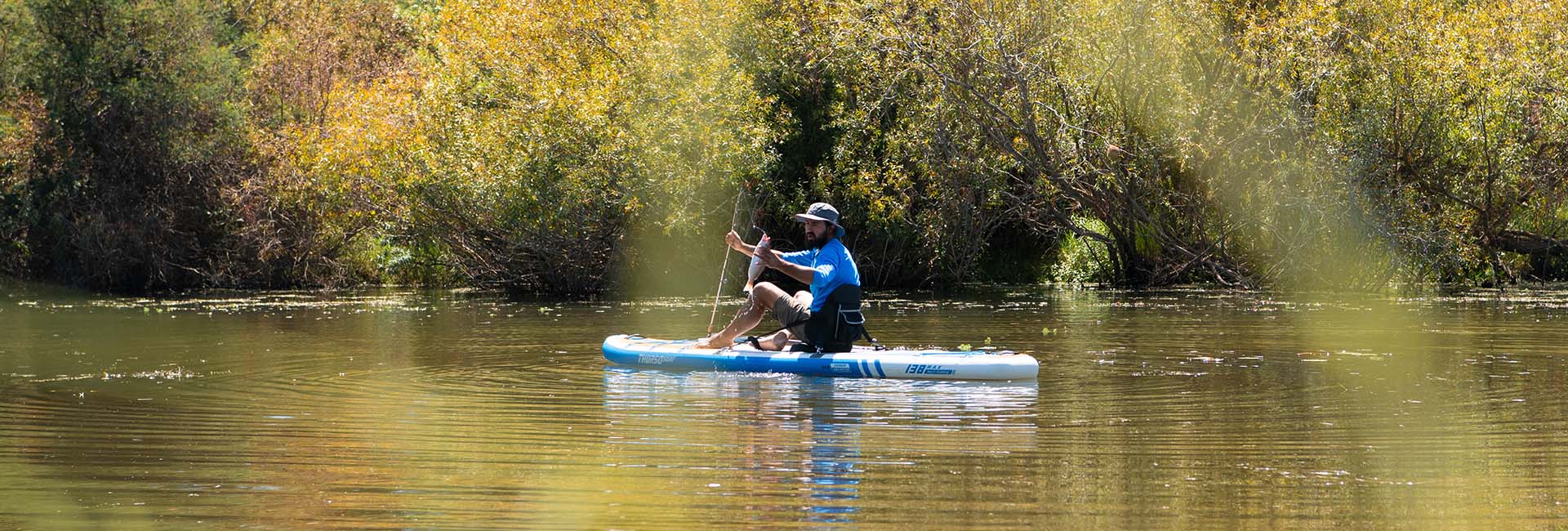
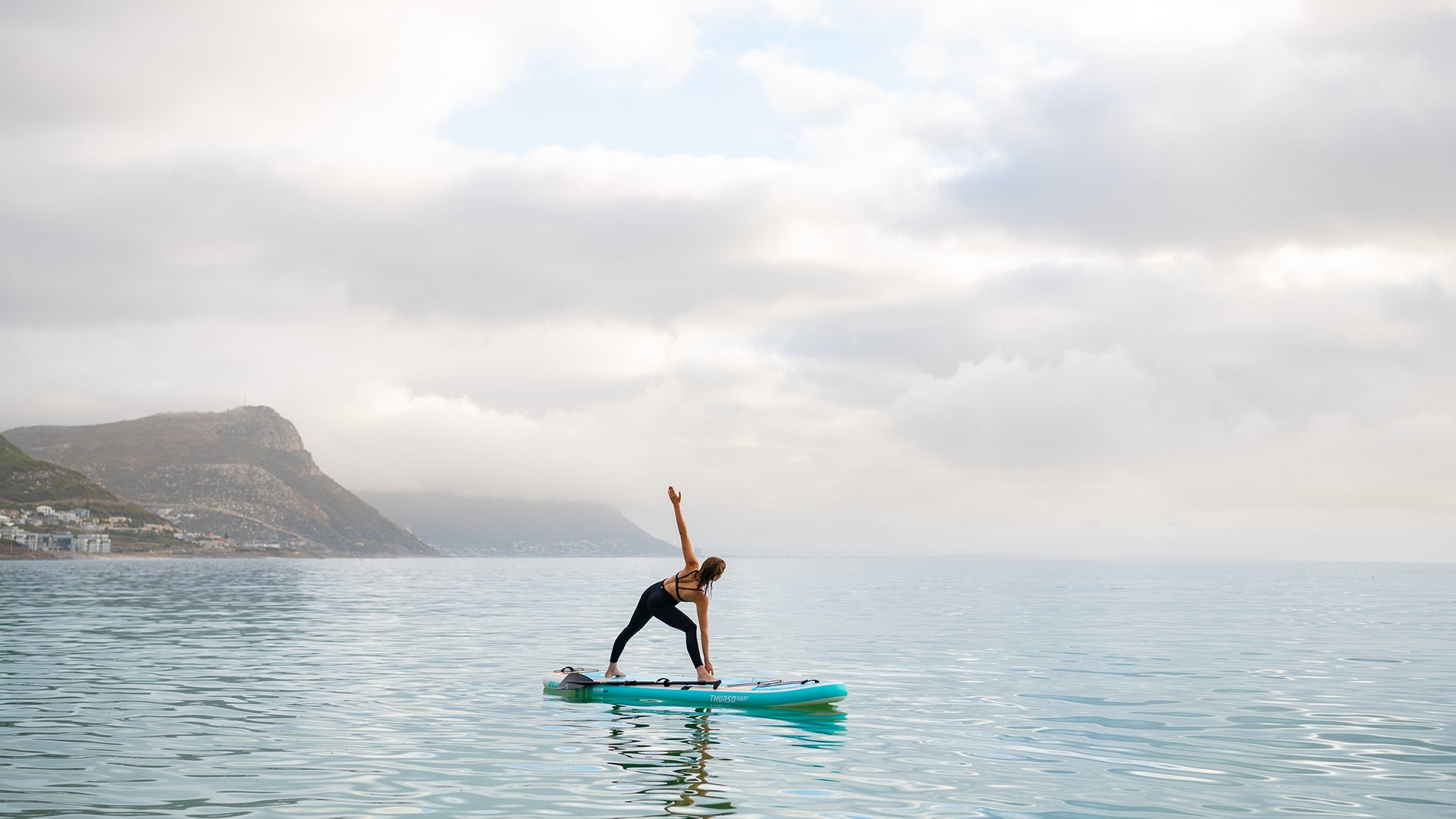
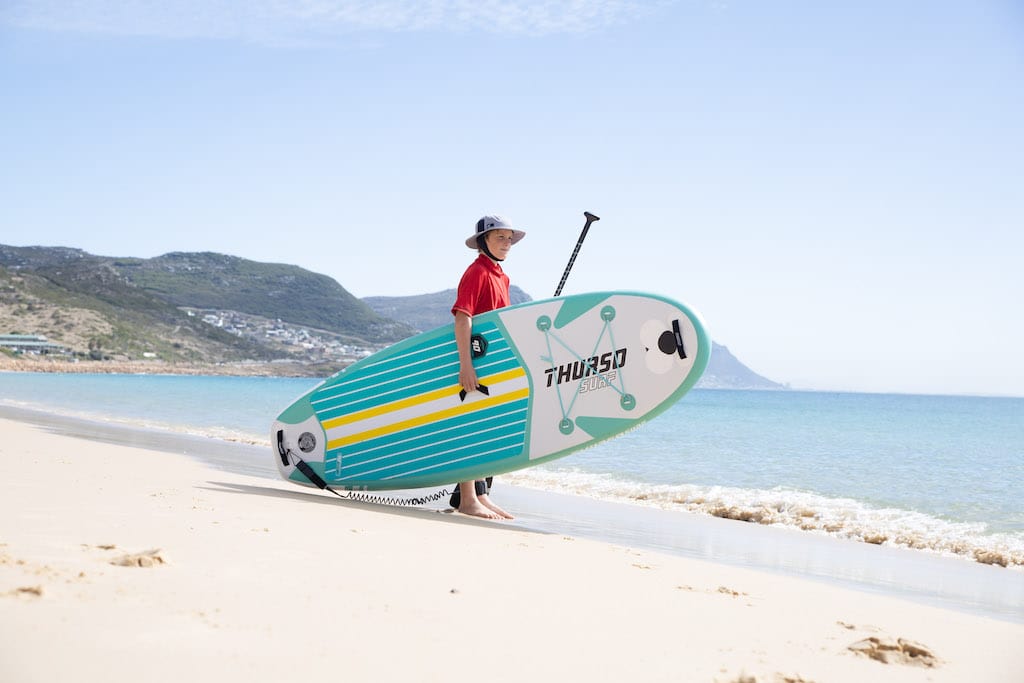
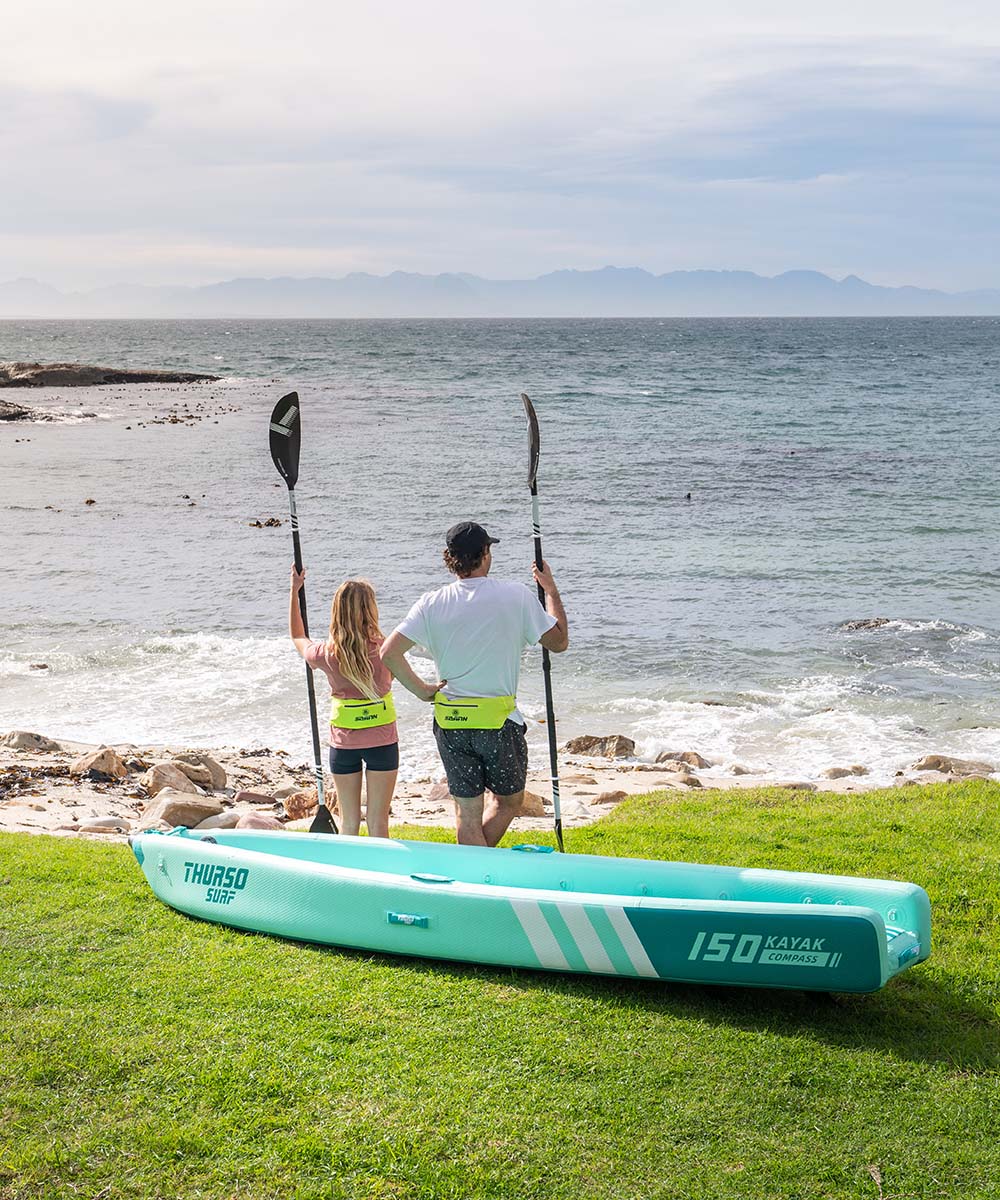
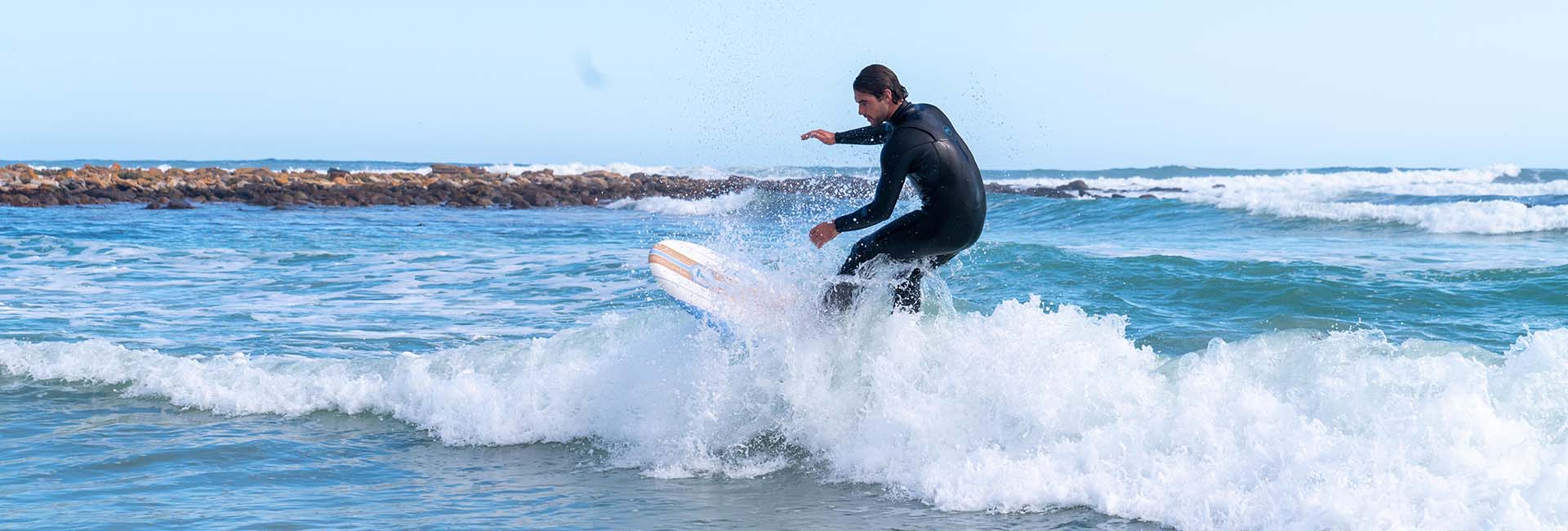
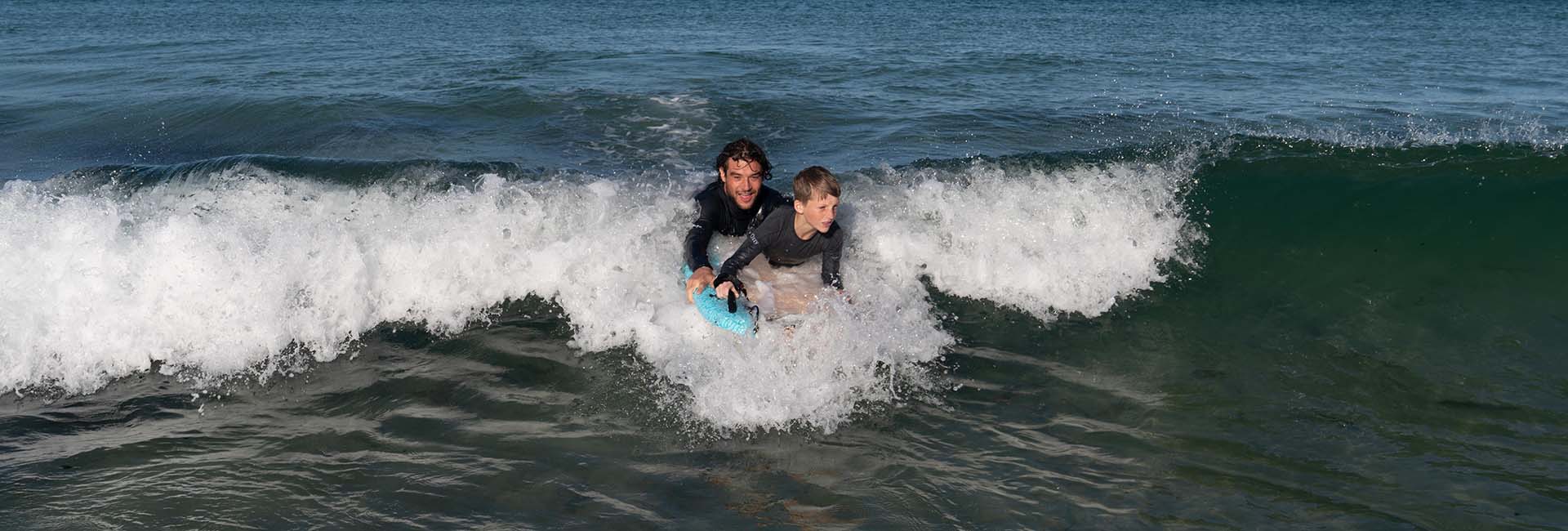
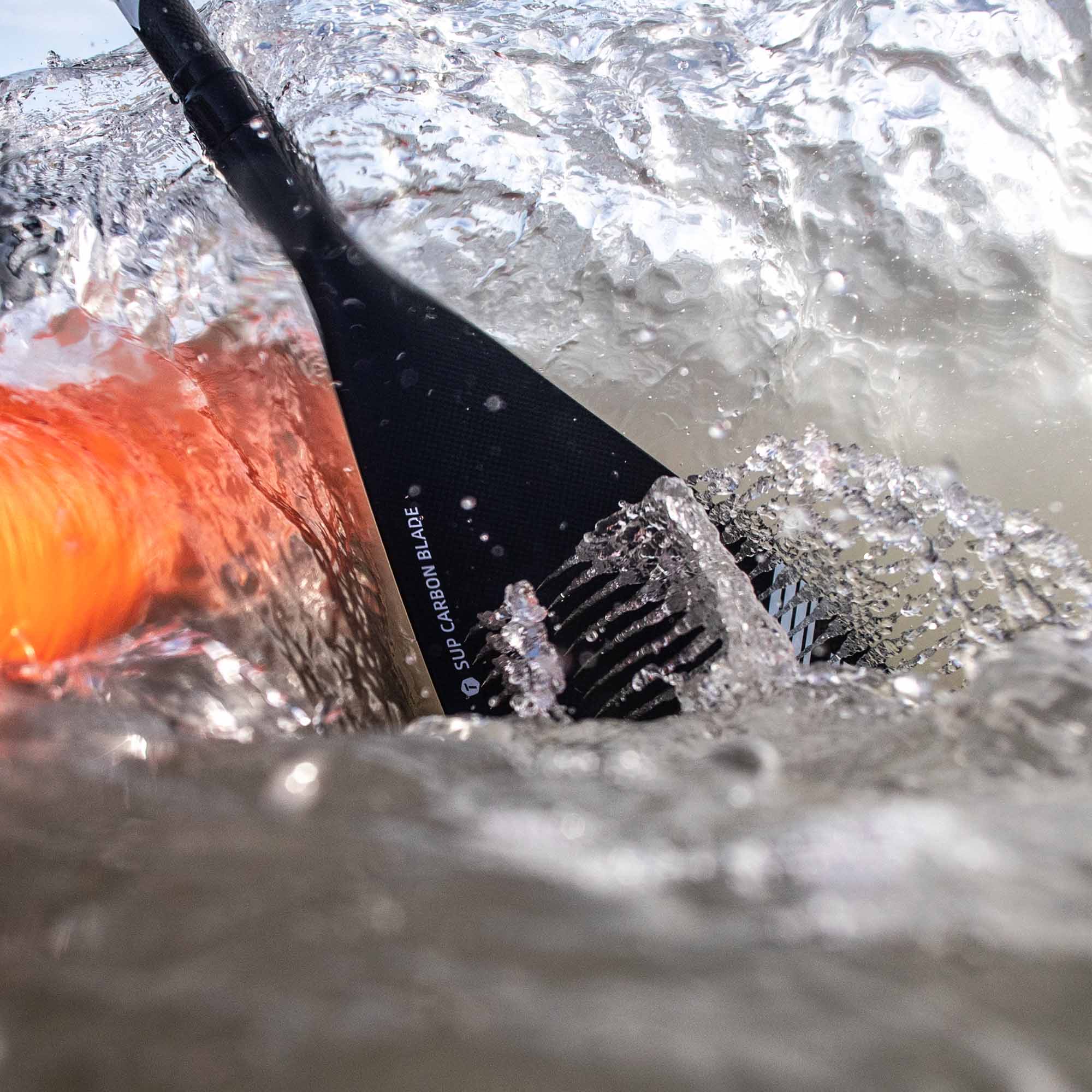
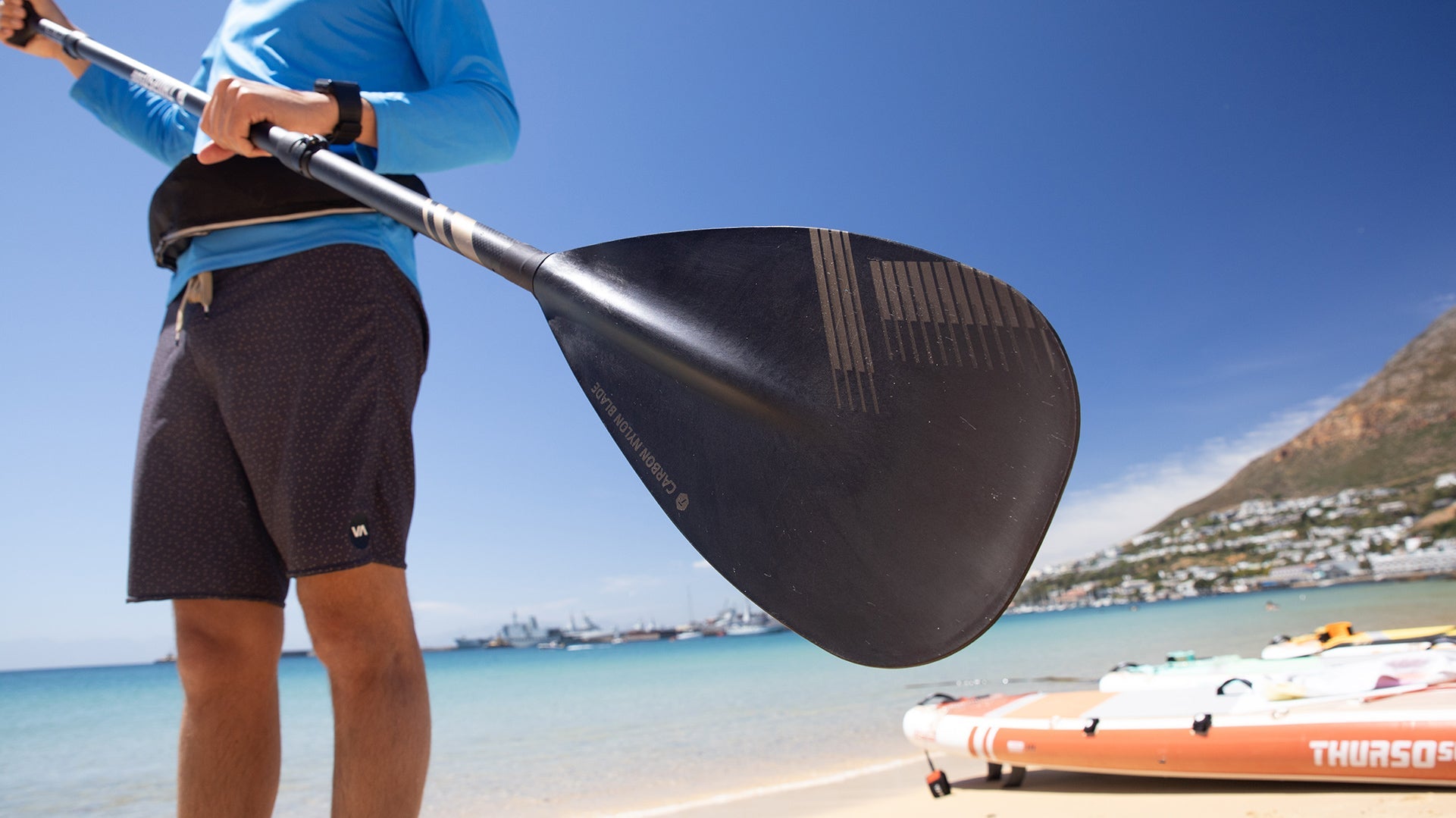
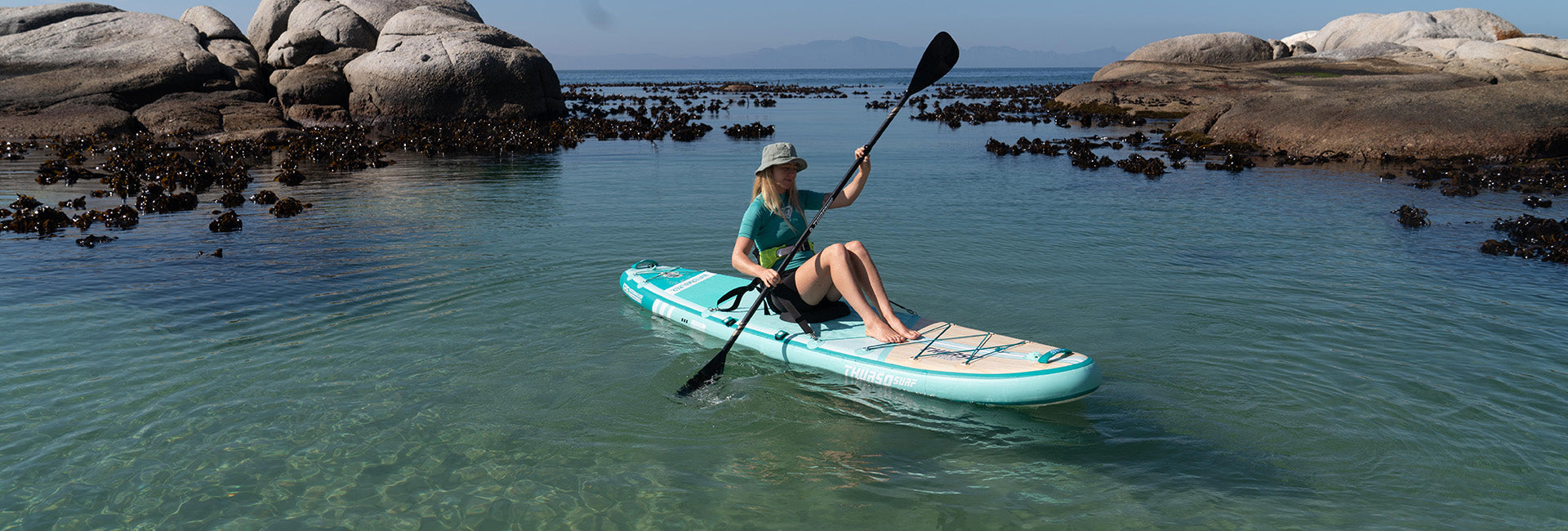

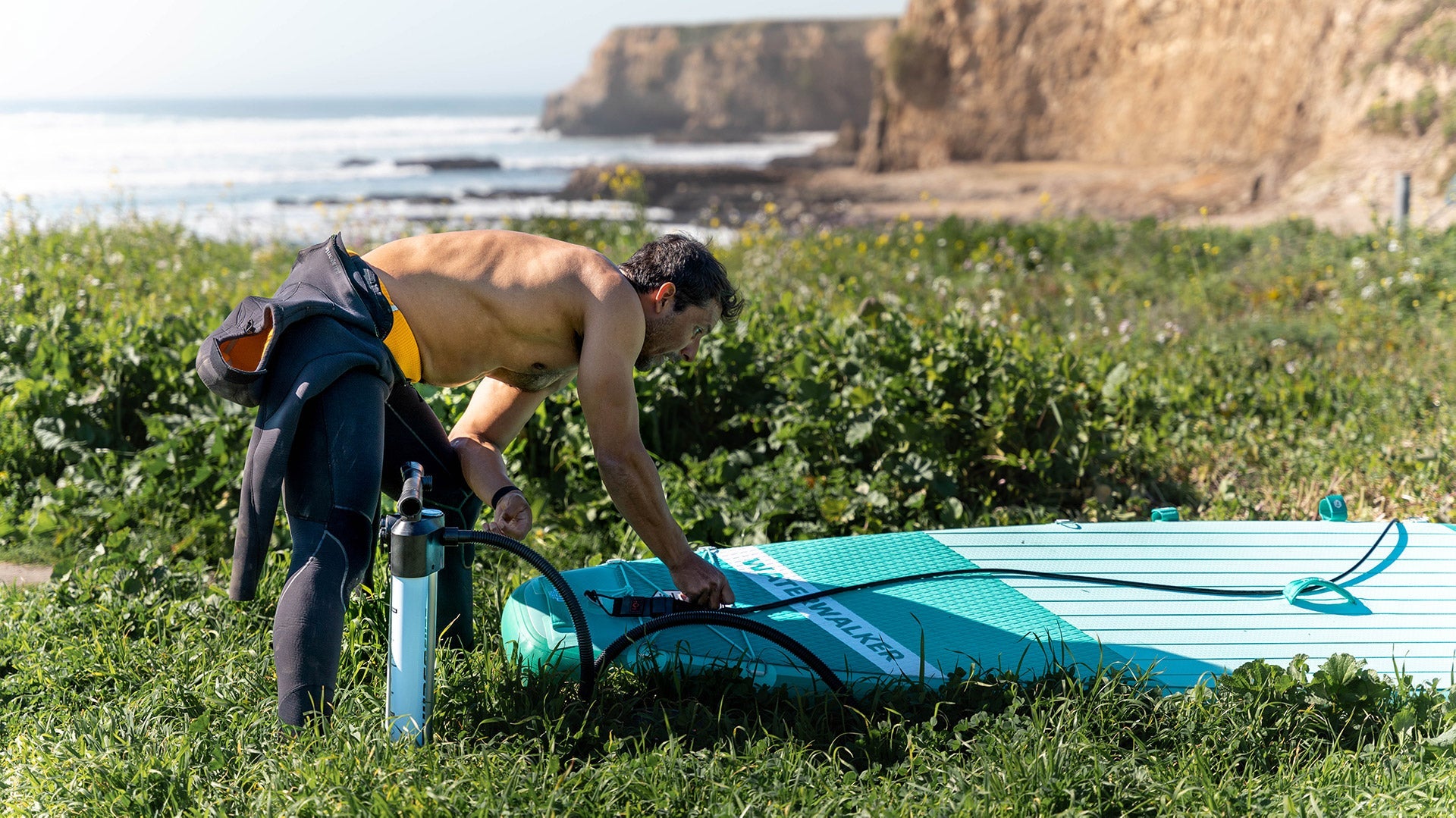
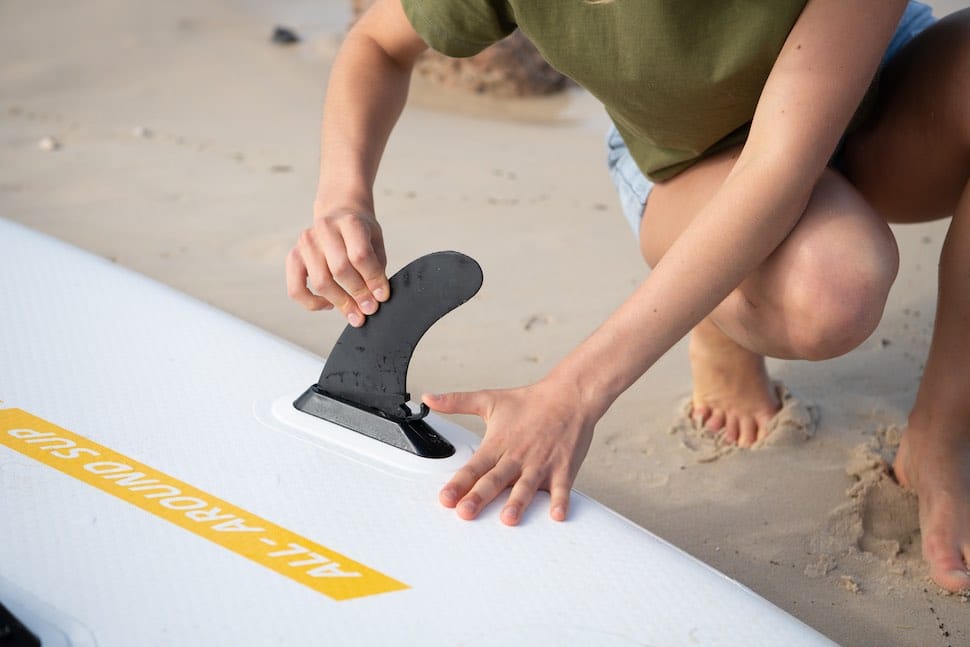



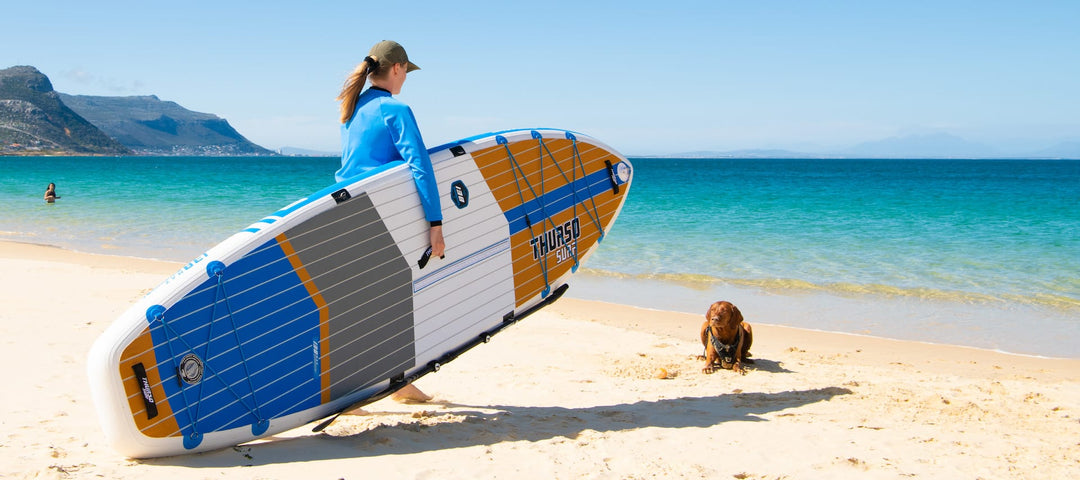
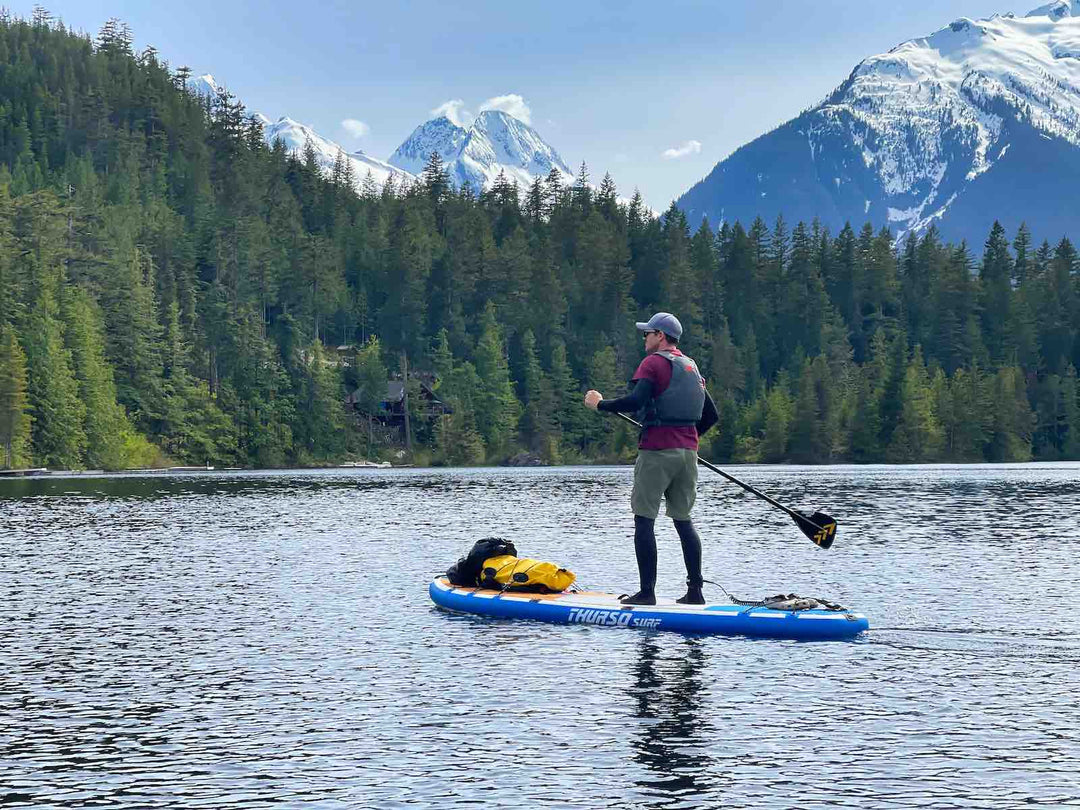

Leave a comment